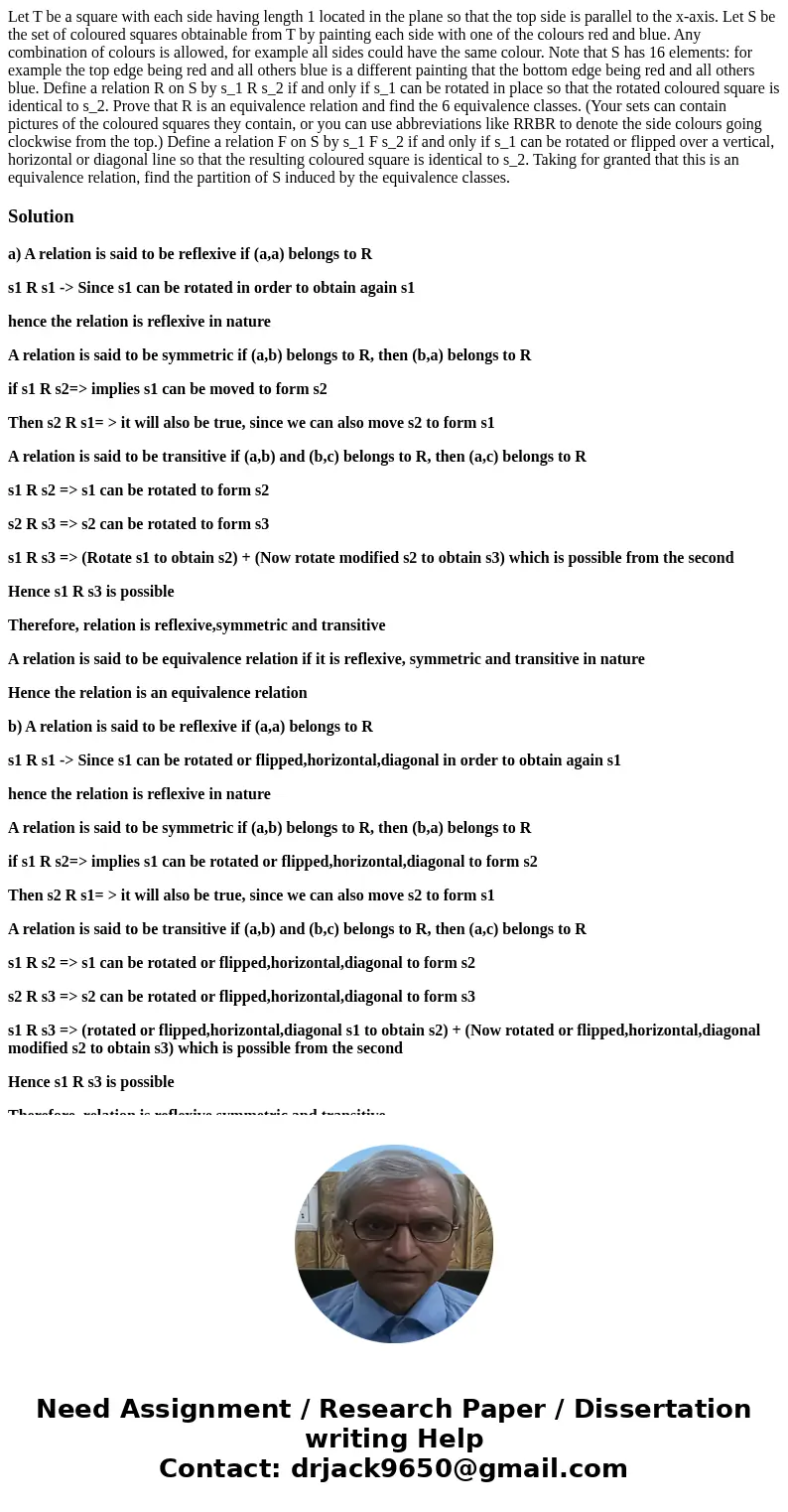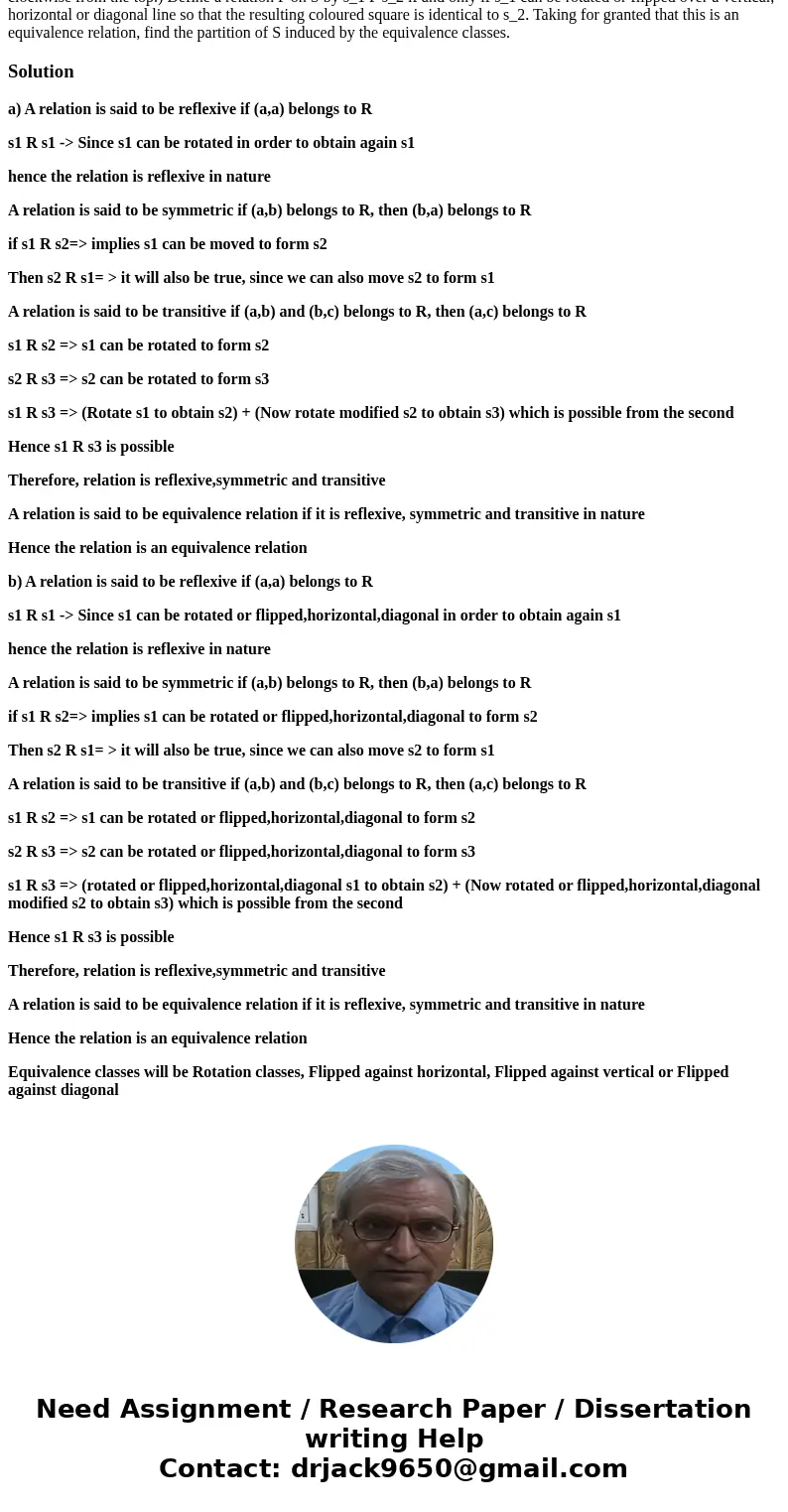Let T be a square with each side having length 1 located in
Solution
a) A relation is said to be reflexive if (a,a) belongs to R
s1 R s1 -> Since s1 can be rotated in order to obtain again s1
hence the relation is reflexive in nature
A relation is said to be symmetric if (a,b) belongs to R, then (b,a) belongs to R
if s1 R s2=> implies s1 can be moved to form s2
Then s2 R s1= > it will also be true, since we can also move s2 to form s1
A relation is said to be transitive if (a,b) and (b,c) belongs to R, then (a,c) belongs to R
s1 R s2 => s1 can be rotated to form s2
s2 R s3 => s2 can be rotated to form s3
s1 R s3 => (Rotate s1 to obtain s2) + (Now rotate modified s2 to obtain s3) which is possible from the second
Hence s1 R s3 is possible
Therefore, relation is reflexive,symmetric and transitive
A relation is said to be equivalence relation if it is reflexive, symmetric and transitive in nature
Hence the relation is an equivalence relation
b) A relation is said to be reflexive if (a,a) belongs to R
s1 R s1 -> Since s1 can be rotated or flipped,horizontal,diagonal in order to obtain again s1
hence the relation is reflexive in nature
A relation is said to be symmetric if (a,b) belongs to R, then (b,a) belongs to R
if s1 R s2=> implies s1 can be rotated or flipped,horizontal,diagonal to form s2
Then s2 R s1= > it will also be true, since we can also move s2 to form s1
A relation is said to be transitive if (a,b) and (b,c) belongs to R, then (a,c) belongs to R
s1 R s2 => s1 can be rotated or flipped,horizontal,diagonal to form s2
s2 R s3 => s2 can be rotated or flipped,horizontal,diagonal to form s3
s1 R s3 => (rotated or flipped,horizontal,diagonal s1 to obtain s2) + (Now rotated or flipped,horizontal,diagonal modified s2 to obtain s3) which is possible from the second
Hence s1 R s3 is possible
Therefore, relation is reflexive,symmetric and transitive
A relation is said to be equivalence relation if it is reflexive, symmetric and transitive in nature
Hence the relation is an equivalence relation
Equivalence classes will be Rotation classes, Flipped against horizontal, Flipped against vertical or Flipped against diagonal


 Homework Sourse
Homework Sourse